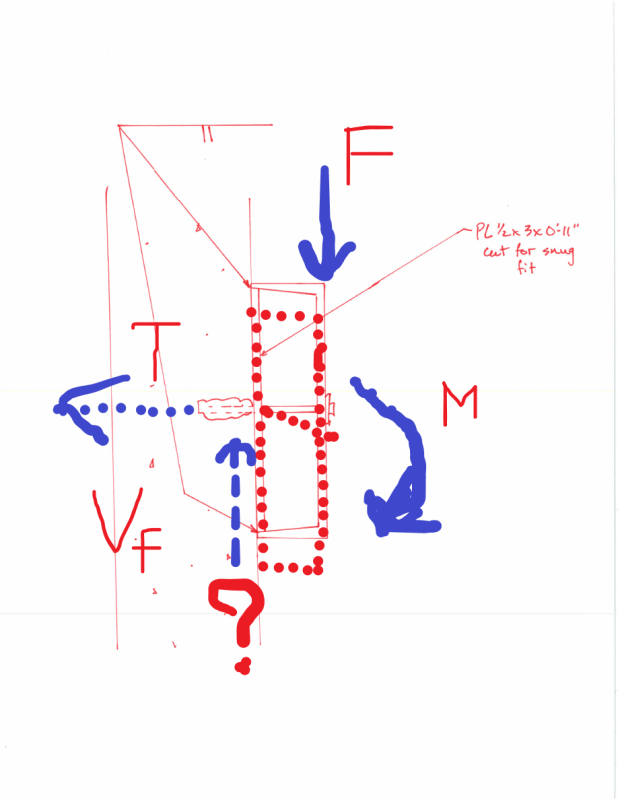zrck99
Structural
- Dec 19, 2014
- 82
I am putting together a set of calculations to justify the details/design that the a steel fabricator put together for a very typical office building stair set. They plan to connect stringers to walls with 1/2" diameter wedge bolts at 2'-0" o.c.
I've shown the detail in the attached pdf. My question is, won't gravity loads cause the bolt to rotate at the face of concrete because of the 3" flange width standoff? I assume people do this all the time so I'm just curious if anyone has seen a good justification for it. Some of the other guys in my office suggested adding 3" square metal shims in between the wall and inside face of the channel web. I agree this would add some stiffness but it still looks a little indirect to me...
Any thoughts?
Thanks
I've shown the detail in the attached pdf. My question is, won't gravity loads cause the bolt to rotate at the face of concrete because of the 3" flange width standoff? I assume people do this all the time so I'm just curious if anyone has seen a good justification for it. Some of the other guys in my office suggested adding 3" square metal shims in between the wall and inside face of the channel web. I agree this would add some stiffness but it still looks a little indirect to me...
Any thoughts?
Thanks

